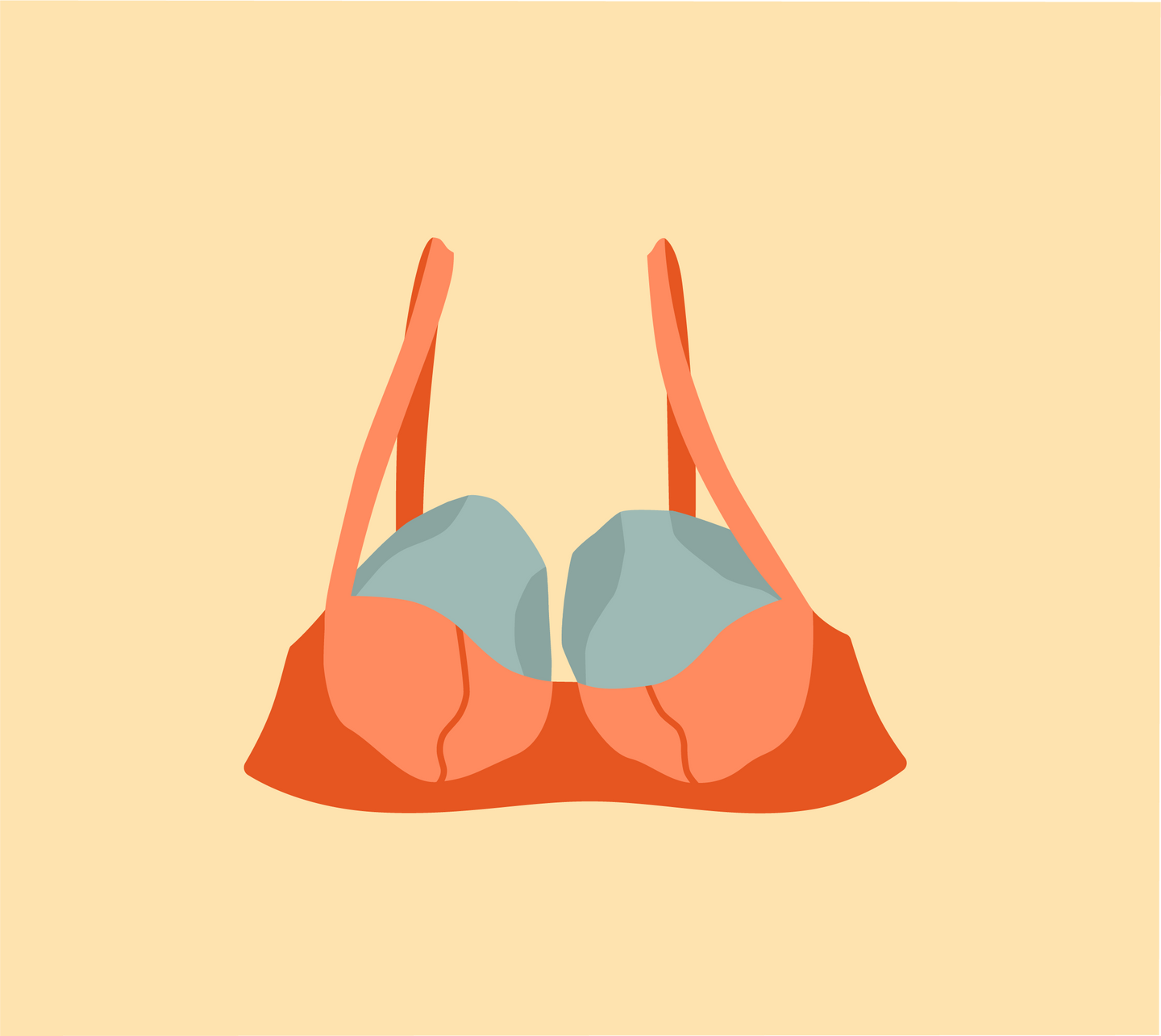Bodily does not provide medical advice, diagnosis, or treatment. The resources on our website are provided for informational purposes only. You should always consult with a healthcare professional regarding any medical diagnoses or treatment options.
What is it?
Engorged breasts feel full, hard or lumpy with tightly stretched skin that can look shiny or red. They often feel warm, are uncomfortable and painful to touch, and may be accompanied by a low-grade fever.
Engorgement frequently happens when breast milk initially “comes in.” In the first one to seven days after birth, water and other components from the bloodstream are combined to produce what we call milk. The sudden influx of milk, which is combined with colostrum that was produced during pregnancy and is still in the breasts, causes buildup and swelling. This constricts blood vessels, which causes more swelling, and results in breast engorgement. Peak symptoms typically occur in days two to five postpartum.
Engorgement can also happen at any time during breastfeeding when there is an imbalance between the amount of milk being produced and extracted. This could be due to a baby nursing less frequently, removing less milk from the breast, excessive stimulation from pumping, or a nursing or pumping routine suddenly changing.
How common is it?
Engorgement is very common. Some studies have shown more than two thirds of people report having it by day five after delivery. Other studies indicate that 75% will have some engorgement symptoms within eight weeks postpartum.
How long does it last?
If it’s managed, engorgement will usually improve within 24 hours and disappear within a few days, as breasts adjust milk production to meet the baby’s needs. If it’s not treated (see below for how), engorgement can cause latching problems for the baby and clogged milk ducts for the parent, which can lead to mastitis.
What can be done to remedy it?
Breastfeeding frequently (nursing and/or pumping) and on demand is one of the best ways to treat engorgement.
Here are some other tips and remedies:
Before and during breastfeeding:
- Gently massage around the areola or use a technique called “reverse pressure softening” to move fluid away from the nipple to help the baby to latch.
- If milk isn't flowing, try applying a little heat to the breast to stimulate milk production. Be gentle with this; when breasts are overproducing ultimately you want to reduce additional stimulation.
- If the breast is too hard for the baby to latch, pump or hand express briefly to soften it. Let out a small amount of milk without emptying the breast. Use these as a last resort, though, because expressing further stimulates the breast into increasing milk production.
Between feedings:
- Apply a small cloth that’s been soaked in ice water to breasts for about five minutes at a time and repeat as needed. This will help with pain and discomfort and the cold gently slows the rate of milk being produced. The cold compress also reduces swelling, which is important since swelling can impede milk flow.
- Wear a nursing bra with good stretch and no constriction (like Bodily's Everything Bra), and avoid underwire or tight bras (sports bras, underwire and molded cups are all definite no-nos) which can cause clogged ducts and mastitis (check out our guidelines for choosing a bra while breastfeeding to learn how to avoid common breastfeeding ailments).
- Take ibuprofen. The Academy of Breastfeeding Medicine and the American Association of Pediatrics have approved ibuprofen for use by breastfeeding women which may reduce pain and swelling. Since all medications pass into breast milk to some degree, it’s important to speak with a pediatrician, OB-GYN or midwife before taking them.
- It's important to check with your doctor before starting any new medication, whether it's prescription or over-the-counter, to make sure it's safe for both your baby and your milk production
Other Methods
In spite of how common it is, there is little medical research on breast engorgement and the best ways to manage it. Here is a list of other approaches and what the evidence suggests about their effectiveness:
Cabbage leaves (myth)
There is no evidence that cabbage leaves reduce engorgement or pain.
Acupuncture (limited data supporting)
Small studies have shown acupuncture may help reduce engorgement and inflammation symptoms.
Ultrasound (limited data supporting)
There is very little data on ultrasound therapy for engorgement. One study found no evidence that it is effective.
Scraping therapy (aka Gua-Sha: limited data supporting)
Gua-Sha therapy involves scraping the skin with a massage tool to improve circulation and it may be helpful. One study showed a significant improvement in breast engorgement, pain and temperature.
What can be done to prevent it?
Breastfeed often — usually every one to three hours in the early weeks, or whenever your baby shows signs of hunger, like sucking on lips or fingers, rooting, or opening and closing mouth. Make sure your baby has a good latch and positioning in order to nurse well, including checking for tongue-tie or other breastfeeding problems. Allow your baby to feed on one side. Don’t switch sides until the baby comes off the breast or dozes off to sleep. Pump or express breast milk whenever you are separated from your baby.
When should I be worried?
Contact a lactation consultant or healthcare provider if:
- Managing engorgement does not work, it lasts longer than one or two days or if it returns often
- Your baby is unable to latch, or is having fewer wet or soiled diapers
- There are hot, red patches on the breast
- You have a fever higher than 100.6 degrees, body aches, chills or other flu-like symptoms, which can be signs of mastitis


-v1729531950562.jpg?830x1020)


